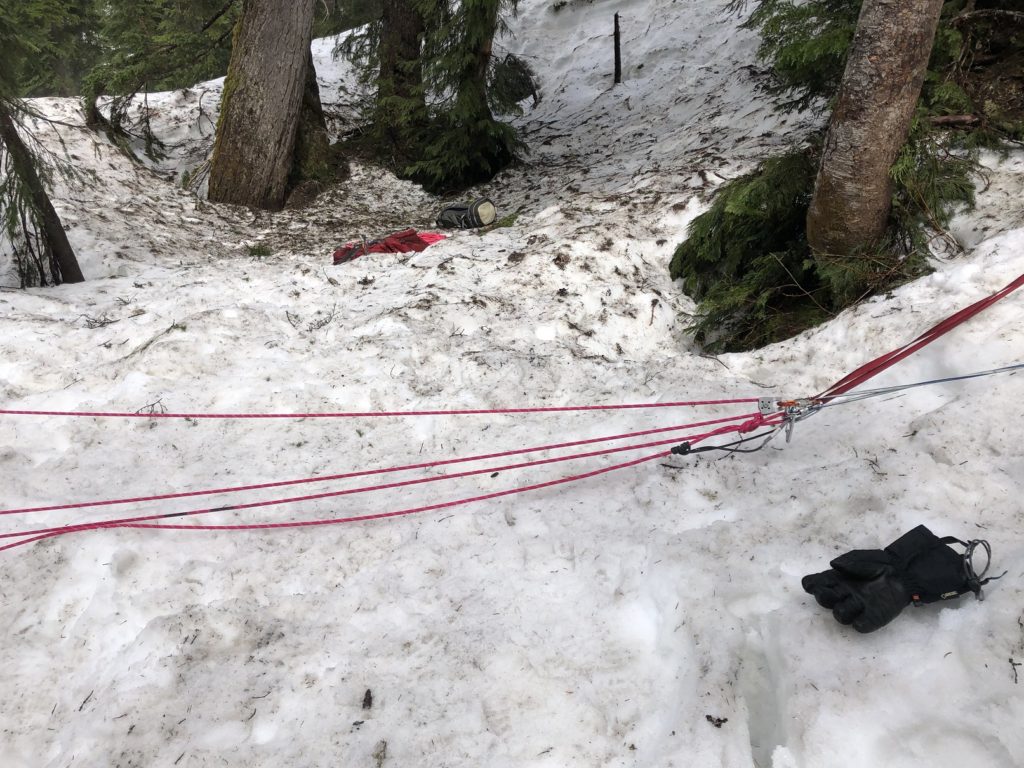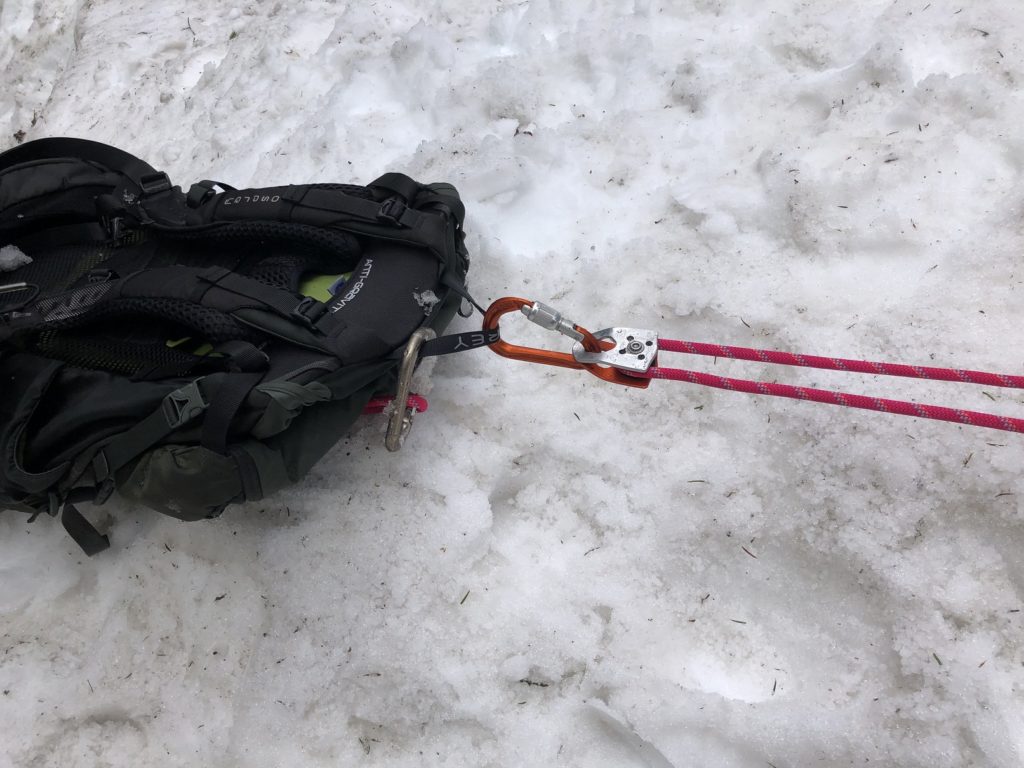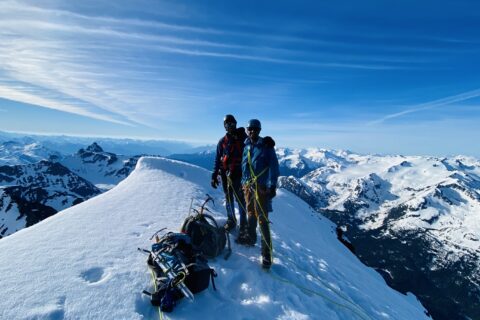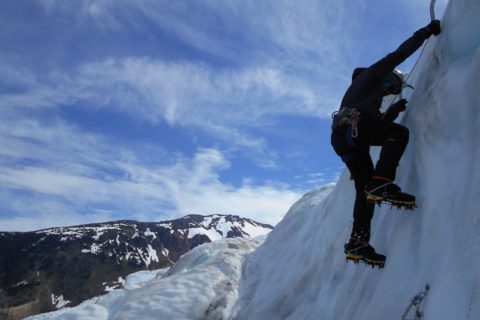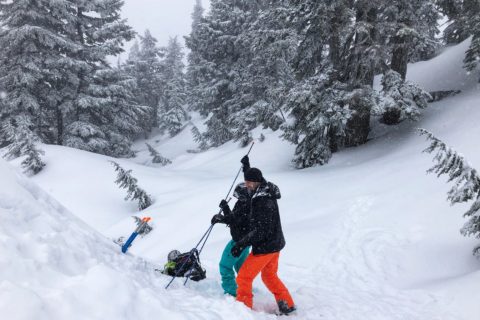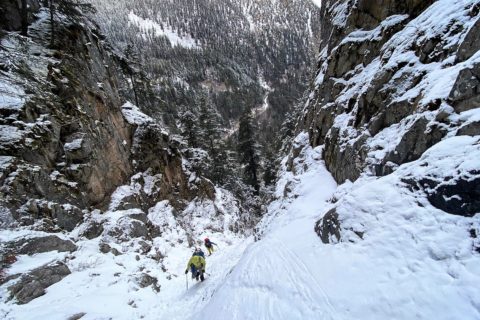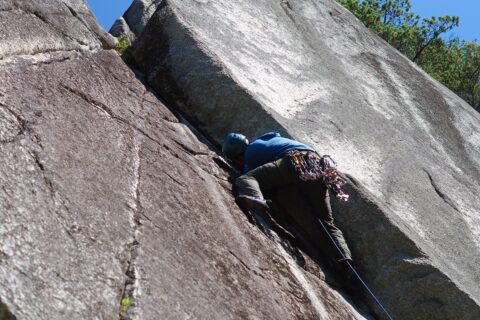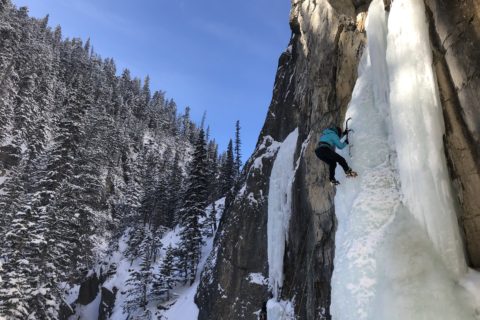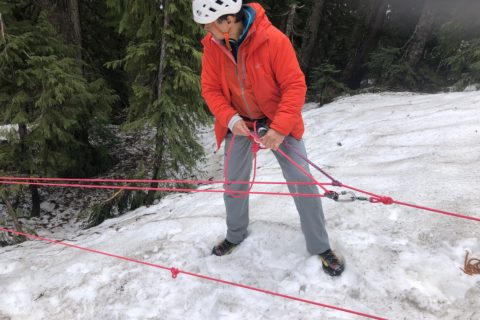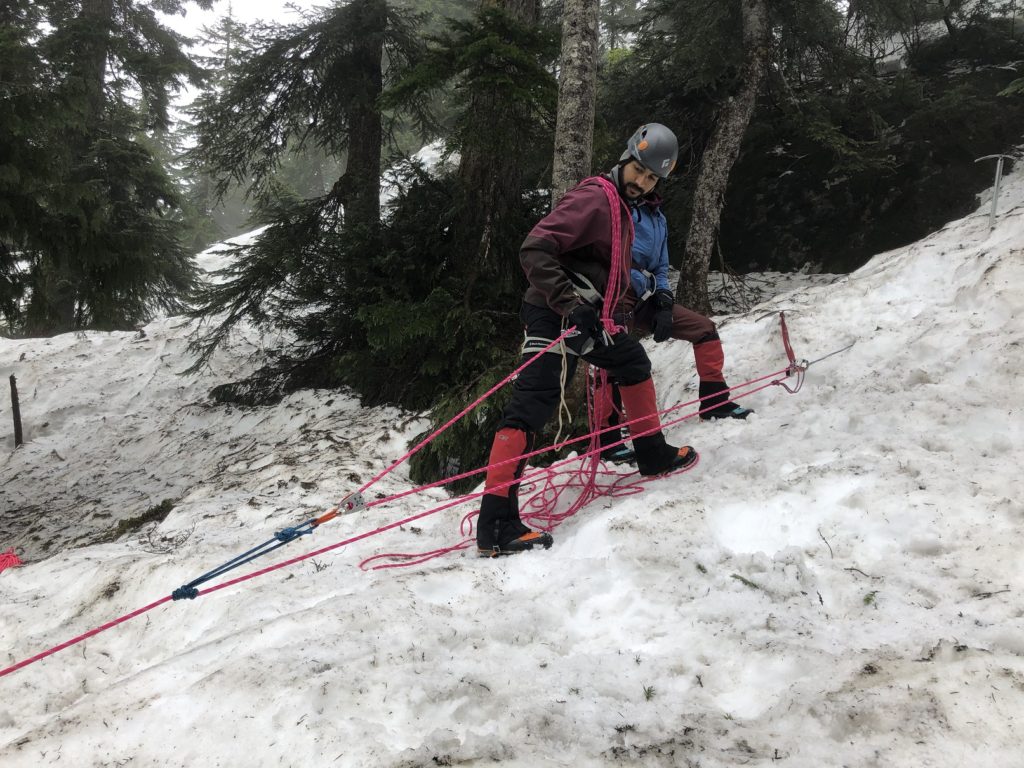
June 5-6 was another rainy weekend in Vancouver, with snow in the forecast at higher elevations. Our options for a climbing or hiking trip were limited. Lily came up with a brilliant idea of doing a crevasse rescue practice on Mount Seymour.
It’s been two years since I practiced crevasse rescue, so I was happy to join. We had a late start on June 5 and met around 10:30 am at the Mount Seymour parking lot. As expected, the weather was horrible. We had limited visibility with the falling of snow pellets.
By 11 am, we had the gear packed up and ready to go. We had nine people in our group – Lily, Bala, Raphael, Gloria, Powell, Neha, Abhi, Rohan and myself.
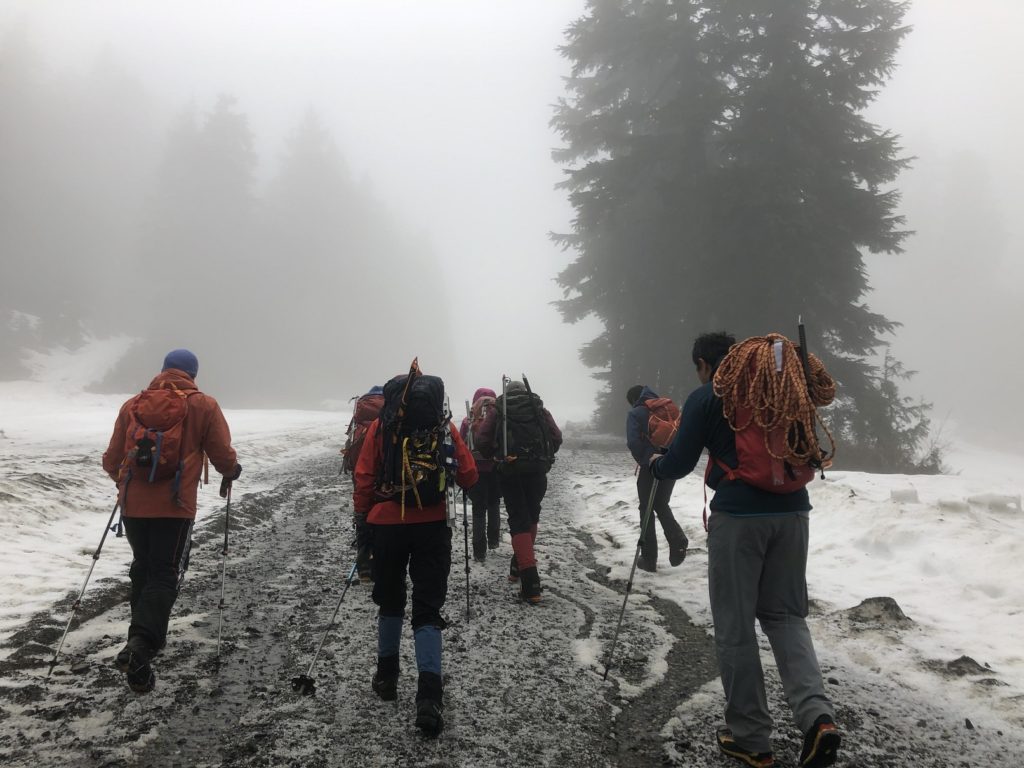
Our first task was to find a good area to practice crevasse rescue. Dinkey Peak was an option close to the trailhead, but it was clear of snow. So we continued to hike on Mt. Seymour Trail and then explored the area just north of Dinkey Peak.
Soon, we found some slopes with smaller and safer cliffs. Then, we split into groups of three, and I would be practicing with Neha and Abhi.
Rope Spacing – Accordion Method
We first discussed the basics of rope spacing. The distance between climbers on a rope team depends on the glacier’s size and varies by mountain ranges.
When I had done my mountaineering course with American Alpine Institute, the guides had recommended keeping “10 – n” arm spans between climbers, where “n” is the number of climbers on the rope team.
So for our group of three, we would have a spacing of seven arm spans (roughly 12 m). I had watched a video from Ortovox Safety Academy that suggested using the “accordion method” for rope spacing. Here is the video –
So I tied into the middle of my 60 m rope with a butterfly knot and secured the two ends on my harness. Neha and Abhi just clipped into the two loops, and we walked away from each other.
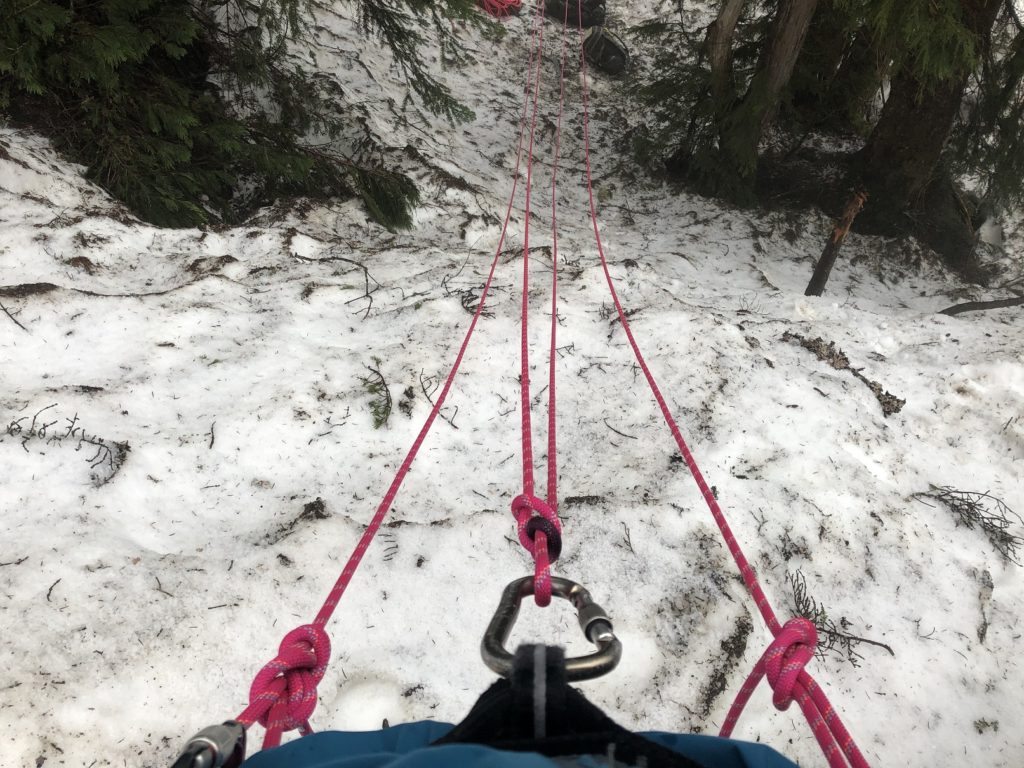
We now had roughly four equal rope lengths. Neha and Abhi would tie a butterfly knot at their ends and coil in the remaining rope.
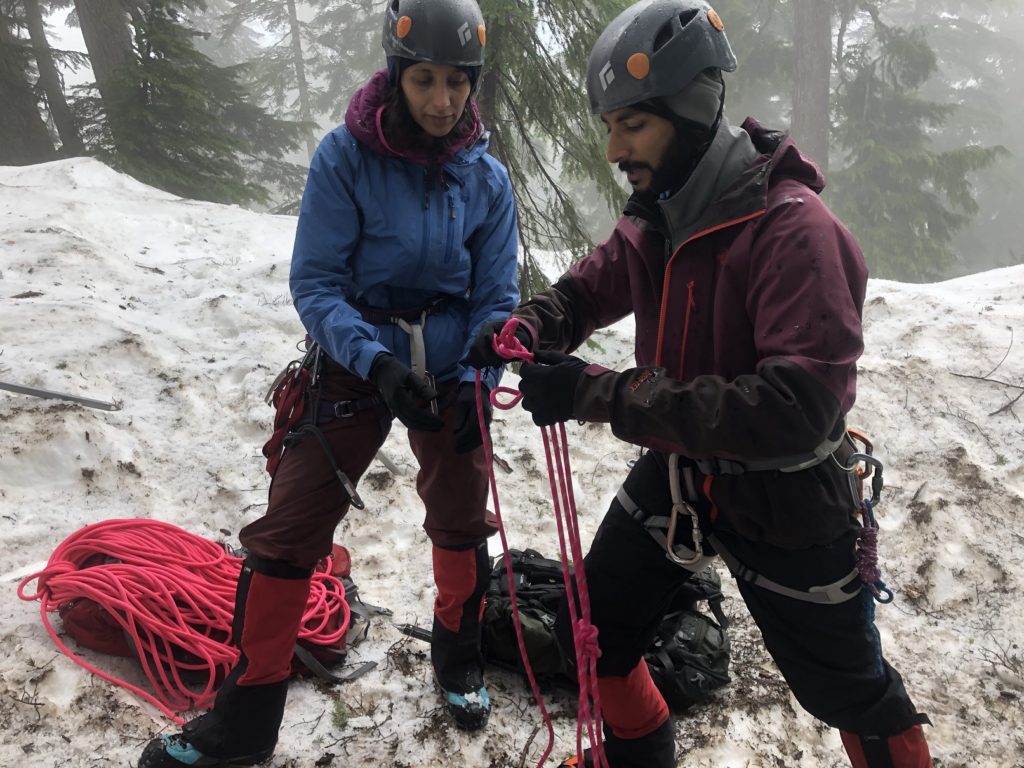
Crevasse Rescue
For crevasse rescue practice, we dropped my bag down the slope. I would be the climber in the middle, and Abhi would be at the other end of the rope.
After a quick self-arrest, Abhi prusiked himself closer to my location. While I was still in a self-arrest position, Abhi started building the first anchor.
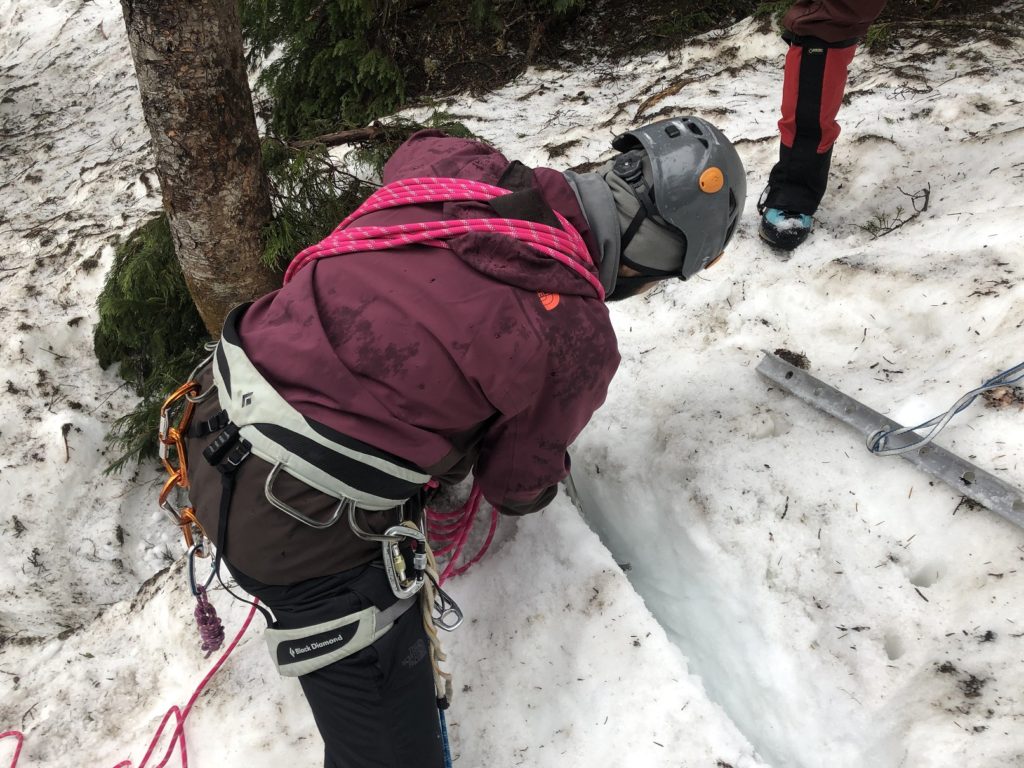
Now, there are different approaches the group can take on who builds the anchor. For example, the Bala-Raphael-Rohan’s group took a hybrid approach, wherein the middle climber built the first anchor, and the end climber did the second anchor. Also, the crevasse rescue situation might dictate how we go about the anchor building process.
Over the years, I have used The Mountaineers video as a reference for crevasse rescue. Watch this video for details on each step of a 3-person crevasse rescue using a 3:1 z-pulley system –
With the 3:1 system set up, Abhi was ready to rescue my bag.
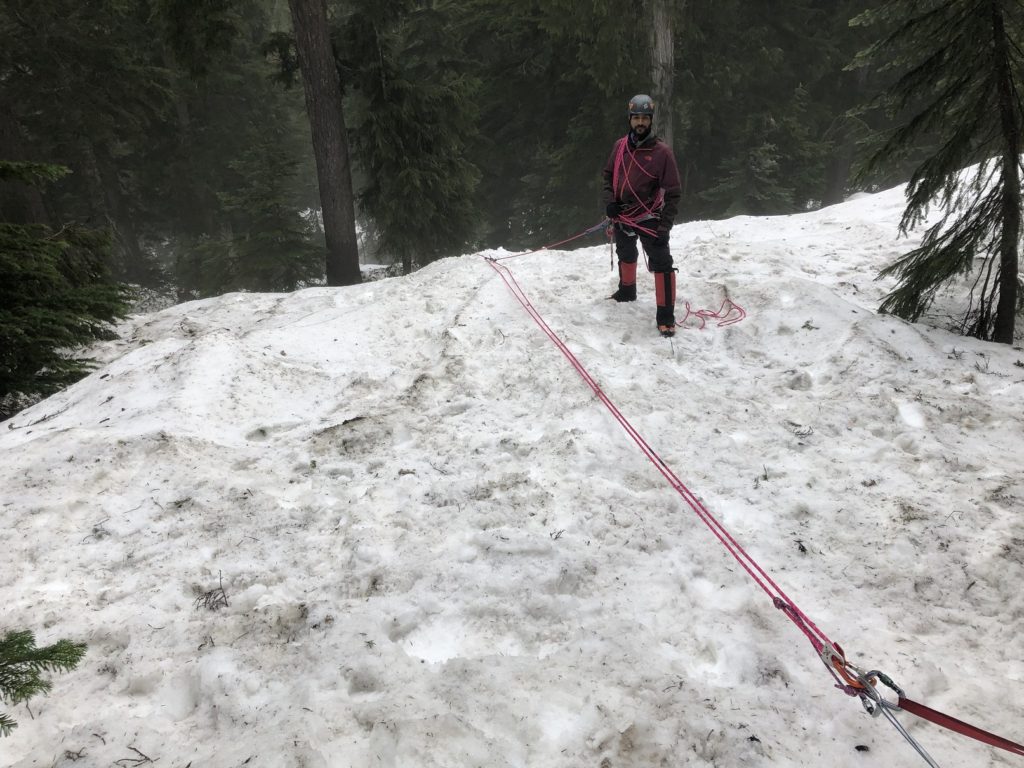
Kudos to the other groups for actually having someone go down the cliff. After lunch, it was Neha’s turn to practice crevasse rescue set up. In the end, we did a c-pulley rescue. This approach helps in a scenario where we won’t be able to use the live rope.
I am sure we didn’t have the most optimal system and practice, but overall it was a good day of practicing the basics and discussing scenarios as a group.
Below, I have shared resources I found helpful. Please feel free to share any additional links or feedback in the comments below.
Resources:
Crevasse Rescue Videos: The Mountaineers | Ortovax Safety Academy
Snow Climbing Skills Review: Alpine Savvy
Book: Glacier Mountaineering – An Illustrated Guide to Glacier Travel & Crevasse Rescue by Mike Clelland and Andy Tyson
Disclosure: I am not affiliated with any of the above individuals or organizations.
Did you enjoy reading this post? Please subscribe to get weekly updates. Thank you!


